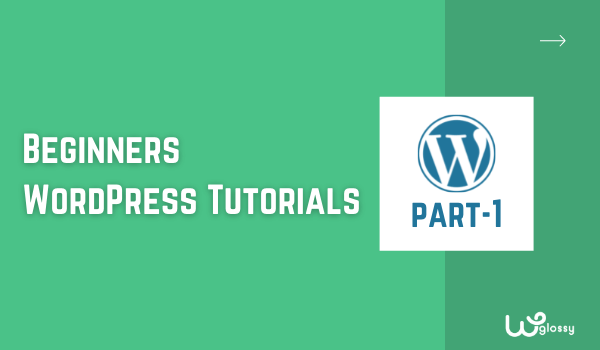
Table Of Contents
- 1. How To Remove index.php From URL WordPress?
- 2. How To Change Menu Color In WordPress?
- 3. How To Wrap Text Around Image In WordPress?
- 4. How To Change Link Color In WordPress?
- 5. How To Change Header Color In WordPress?
- 6. How To Hide Author In WordPress?
- 7. How To Disable Comments?
- 8. How To Delete All Comments In WordPress?
- 9. How To Change The Name Of The Blog On WordPress?
- 10. How Do I Make My WordPress Site Public?
- 11. How To Add Subheadings In WordPress?
This blog post contains basic WordPress tutorials for beginners with step-by-step instructions and screenshots.
If you are new to WordPress, these answers will help you!
As a proud user of WordPress CMS for the past 12 years, I’m keenly interested in answering some commonly asked questions by the newbies.
I hope these WordPress tutorials for beginners will help to clear their doubts and create business websites in an attractive way.
Before getting into the basic WordPress tutorial, I would like to tell you a few words for your betterment.
WordPress is a fantastic open-source yet famous blogging system that allows you to build a website from scratch. Customizing and managing a site from the backend is just a piece of cake here.
Glad I got a nice opportunity to write the WordPress beginner tutorial for my new readers. I have explained every commonly searched question with a clear image.
Since several steps are involved, don’t think that it will be difficult to understand the settings. You can easily do it without any difficulty.
1. How To Remove index.php From URL WordPress?
It is a commonly asked question by WordPress newbies!
Step 1: Go To WordPress Dashboard > Settings > Permalink
Step 2: Choose the option “Post Name” as shown in the below screenshot.
Step 3: Also, enter – /%postname%/ in the custom structure as shown in the image.
That’s it! You successfully removed the index.php from WordPress URL.
2. How To Change Menu Color In WordPress?
It totally depends on the theme you have installed on your blog. Hence, it would be difficult to give the exact CSS for color changing.
However, I’m sharing a common WordPress default theme CSS code and it will be fit if you use the Astra WordPress theme.
If you are not using this popular WordPress theme, you should check this comparison, Astra Pro Vs Free to understand its quality.
Here is the CSS code to change the WordPress menu color!
Visit Dashboard > Appearance > Customize > Additional CSS
Add the codes now!
Change Menu Background Color
.main-navigation{
background: #f6cbcb;
}Change Menu Text Color
.main-navigation ul li a{
color: #ffffff !important;
}Menu Current Item Select Color
.main-navigation .current-menu-item{
background:#c07777;
}Menu Current Item Select Text Color
.main-navigation .current-menu-item a{
color:#111111 !important;
}Change Menu Hover Background Color
.main-navigation ul li:hover{
background:#c07777;
}Change Menu Hover Text Color
.main-navigation ul li a:hover{
color:#111111 !important;
}Change Dropdown Menu Or Sub Menu Background Color
.main-navigation .sub-menu{
background: #f6cbcb;
}3. How To Wrap Text Around Image In WordPress?
You should know this simple WordPress feature!
Step 1: Visit your post Edit section
Step 2: Upload the image
Step 3: Go to the place where do you want to place the image. Choose left alignment as shown in the below screenshot

Step 4: If the Right alignment is your requirement, do it like this.
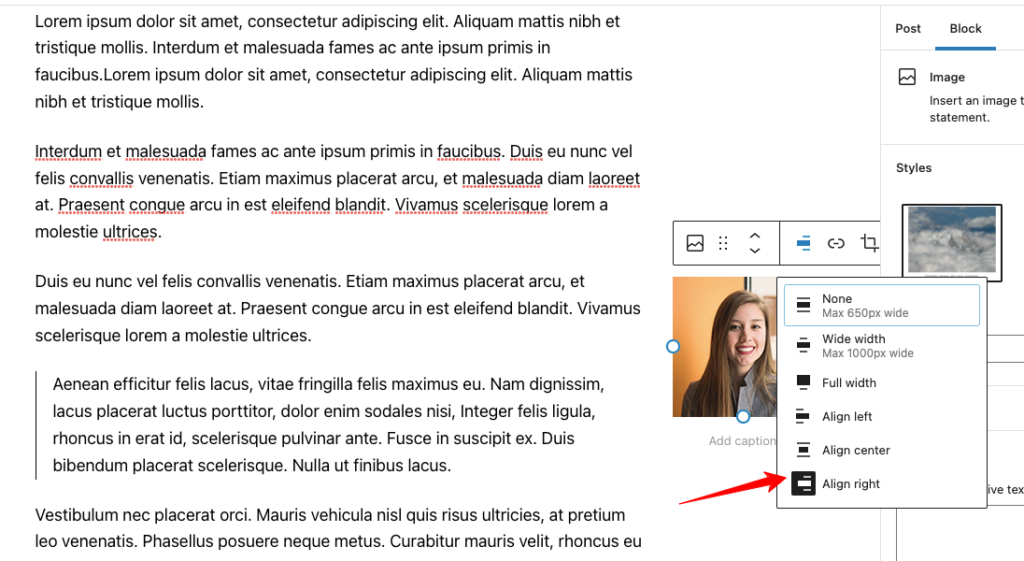
Step 5: Save Settings and check the output. It will be like

4. How To Change Link Color In WordPress?
Adding links to the content will improve your site authority! To modify the colour of the link in WordPress, follow the steps below!
Step 1: Hope you added your internal link as we have done in the following screenshot

Step 2: Visit Dashboard > Appearance > Customize > Additional CSS. Add the CCS codes to change the WordPress link color
a{
color:#ff0000;
}After adding the above CSS, the output looks like below

Step 3: If you want to change color while hovering over the link, then add the following CSS.
a:hover {
color:#0000ff;
}5. How To Change Header Color In WordPress?
You just need to include the following codes in the Additional CSS section. After adding the codes, the background color of your site header will get changed.
header{
background-color:#eeeeee;
}6. How To Hide Author In WordPress?
Most of the themes have the option to hide the byline author and also after post author section in their theme option
Here I am providing the default CSS to disable the author in twenty twenty-one theme
Be On – Dashboard > Appearance > Customize > Additional CSS
.author-bio{
display:none;
}Or simply leave all the profile fields blank like the below image, then it will not show your author section after the post.
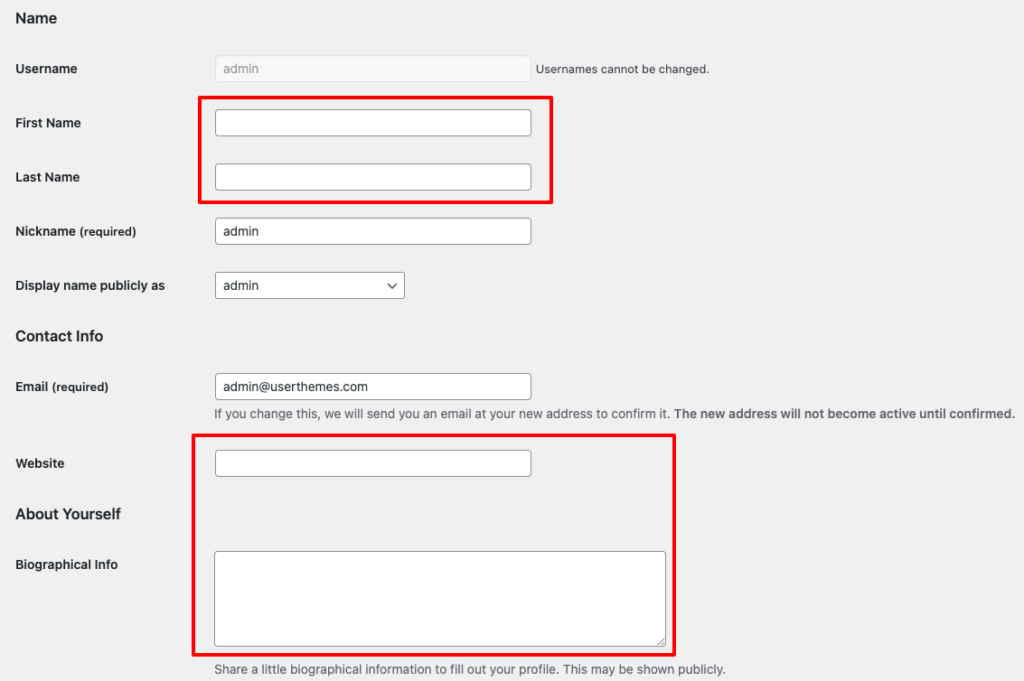
7. How To Disable Comments?
To disable comments on the entire website, you should
Visit Dashboard > Settings > Discussion Settings
And uncheck the following two options like the screenshot.
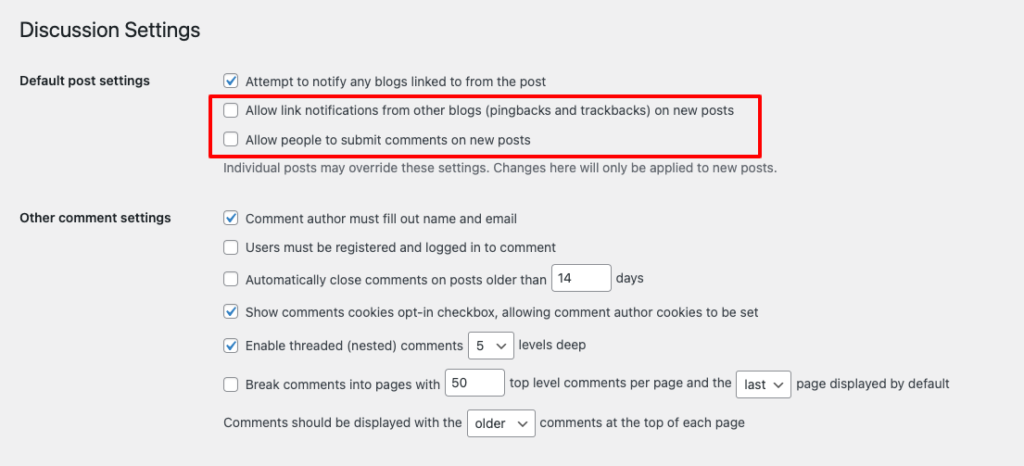
To erase comments in multiple posts, do as per the screenshot below
Step 1: WordPress Dashboard > Posts > Edit
Step 2: Select all posts, Click Apply
Step 3: Now, choose the “Do not allow” option in the comments section.
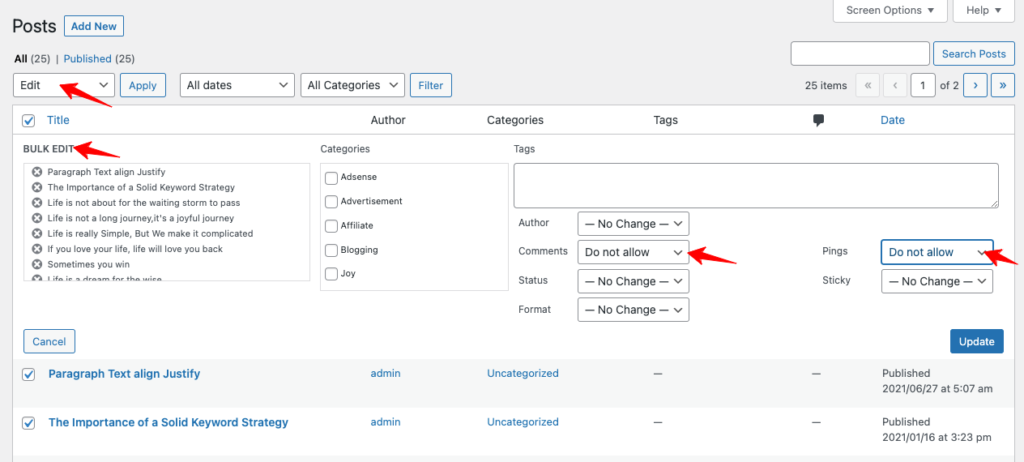
To disable comments in a particular single post, check the below screenshot.
Visit your post edit section, then uncheck the options in the sidebar as shown below.
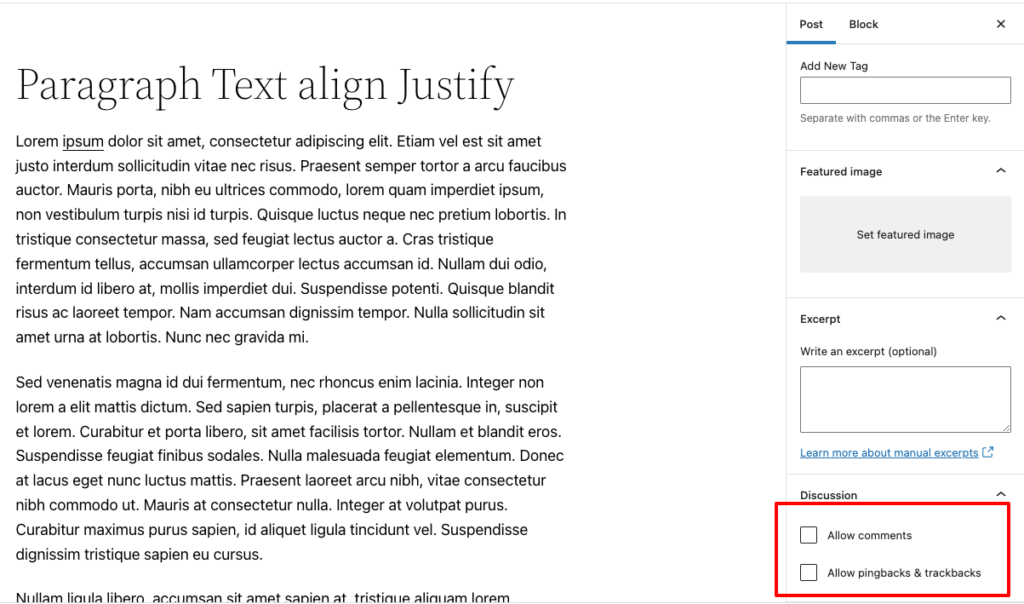
8. How To Delete All Comments In WordPress?
There are 2 different ways to delete the comments in WordPress. Let’s see them one by one!
First Method To Remove WordPress Comments
Step 1: Go to Dashboard > Comments
Step 2: Select the option – Author, and then click – Move to Trash. Once the comments moved to trash, click – Trash > Empty Trash


Second Way To Delete Comments In WordPress
Step 1: Install the plugin – WP Bulk Delete. Let’s see how to delete all comments with this plugin!
Step 2: After installing the plugin, Dashboard > WP Bulk Delete, click – Delete comments option
Step 3: Enable all the options to get rid of all the WordPress comments. Check the below screenshot!
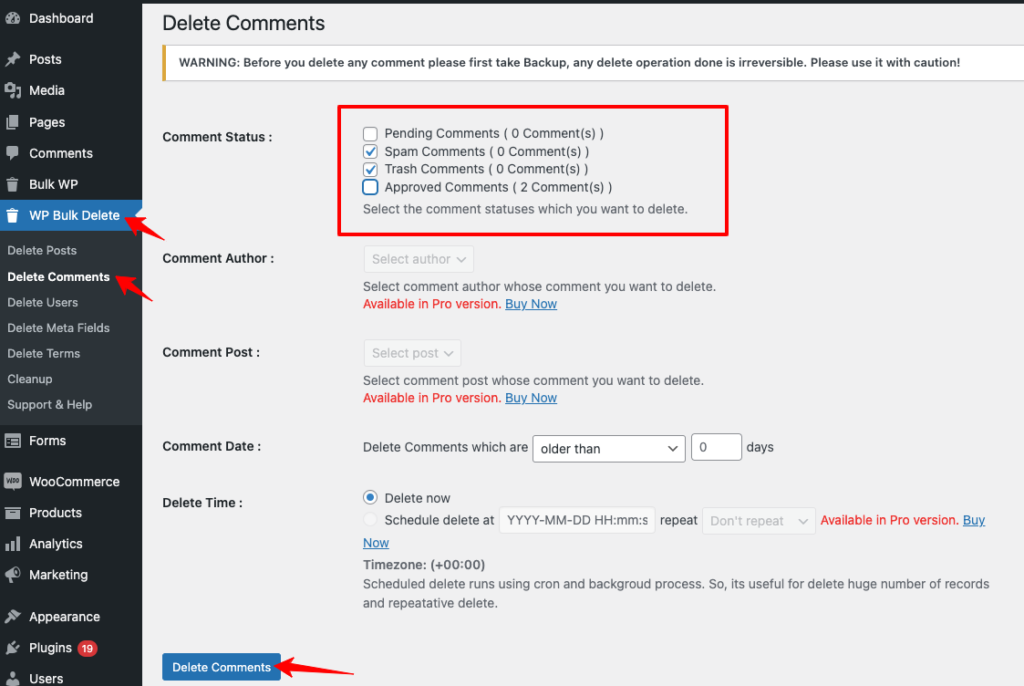
9. How To Change The Name Of The Blog On WordPress?
How to modify or change the blog name in WordPress – It is one of the common questions asked by new users. Let’s see this easy WordPress tutorial now!
Step 1: Go to your Dashboard > Settings > General Settings
Step 2: Loos at the site title option. You may modify the blog name as per your requirement. check the below screenshot!

10. How Do I Make My WordPress Site Public?
By Default, all the WordPress sites are public only!
Step 1: To show your site to a particular search engine like google, you should submit a sitemap through the Google Search Console https://developers.google.com/search
Step 2: Choose “Search Console” at the bottom of the site under the “Tools” section!
Check the following tutorial to submit the sitemap!
To disable your site from search engines, you should follow this basic WordPress tutorial!
Choose Dashboard > Settings-> Reading settings
There you have the option to restrict your site from the search engines. Look at the following screenshot, choose that option – Discourage search engines from indexing this site

11. How To Add Subheadings In WordPress?
Adding the subheading is just not rocket science in WordPress!
Step 1: Go to Dashboard > Posts
Step 2: Click “Add new” or “Edit” post, and now you may add the subheading as shown in the screenshot.
Step 3: First, you need to add heading blocks. So, click the “+” button in your Gutenberg editor. Select “Heading” from the list!

Step 4: Choose H2, H3, H4, H5, or H6 and enter the text for the subtopic as per your requirement. That’s all!

Wrapping Up
WordPress is the best content management system that helps build millions of websites through its flexible nature.
You don’t need to buy expensive books for learning the WordPress tutorial. As it has easy to use interface, you can master your skills in designing and managing your websites here.
I have received several doubts from WordPress beginners and hence prepared this basic tutorial with detailed screenshots.
If you have any trouble or experience any difficulty with this well-known CMS, please share your queries in the comment section. I’ll answer them as elaborately as possible.

Hey
Thanks for sharing WordPress is quite easy to use for beginners. It comes with a simple dashboard with different menu options listed in the sidebar.
Your article was very comprehensive and interesting, thank you